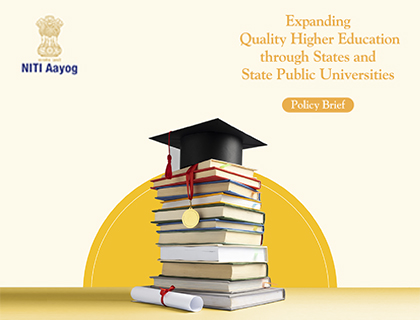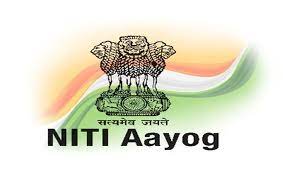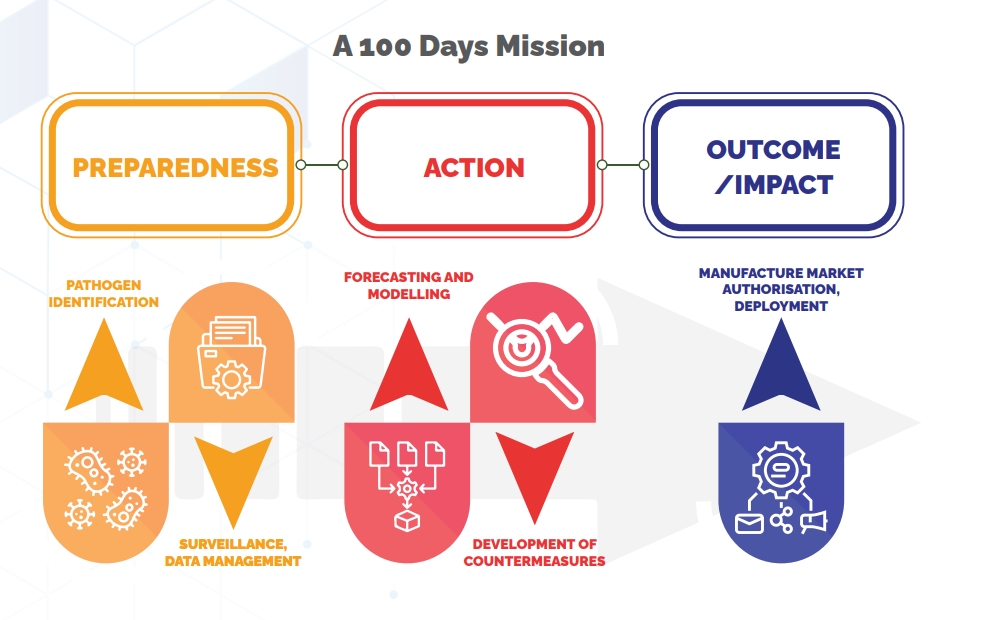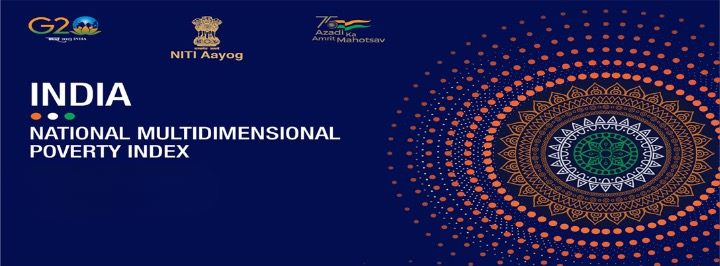Revitalizing State Universities: NITI Aayog’s Vision for Quality Higher Education

- 11 May 2025
In News:
India’s higher education sector, the third largest in the world, is largely shaped by its state universities. In its recent report titled ‘Expanding Quality Higher Education through States and State Universities’, NITI Aayog critically analyses the systemic challenges in these institutions and offers a strategic roadmap to enhance their quality, inclusivity, and global competitiveness.
Role of State Universities in India’s Higher Education Ecosystem
State universities constitute nearly 80% of all higher education institutions in India and cater to the majority of enrolled students. They play a pivotal role in ensuring access to education across socio-economic and geographical divides, particularly in underserved regions. Their contribution is crucial to India’s goals of inclusive development, knowledge-driven growth, and human capital formation. Consequently, their performance directly influences India’s research output, innovation capacity, and global academic standing.
Challenges Highlighted in the Report
1. Inadequate Investment and Uneven Funding Patterns: The report underscores the lack of consistent public investment in higher education. While some states like Kerala and Tamil Nadu invest substantially, others like Karnataka, despite high college density and enrolment, spend comparatively less. This disparity leads to uneven development and limits potential in several regions.
2. Declining Financial Commitment from States: There is a noticeable decline in state-level financial support for higher education, compounded by limited capacity to implement recommended reforms. The report calls for greater central assistance to bridge fiscal gaps and ensure a uniform quality of education nationwide.
3. Quality Deficit and Research Gaps: State universities often lack robust infrastructure, qualified faculty, and research funding. As a result, India’s institutions fall short in global rankings, reflecting systemic weaknesses. There exists a pressing need to strengthen research ecosystems and align academic output with innovation.
4. Governance and Autonomy Issues: Excessive political interference and bureaucratic hurdles dilute institutional autonomy. The report flags the tension between central regulatory bodies and state institutions, urging reforms that empower universities with greater academic and administrative freedom.
Key Recommendations
- Strengthening Research and Innovation: The creation of Centres of Excellence, dedicated research universities, and collaboration with global institutions are essential. Funding mechanisms should prioritise research aligned with national goals.
- Pedagogical Reforms and Multidisciplinary Learning: Promotion of interdisciplinary education, digital tools, and experiential learning is advocated. Regular faculty training and industry collaboration are needed to ensure skill-oriented learning.
- Financial Reforms and Public-Private Partnerships: States should aim to increase GDP spending on higher education. The report recommends performance-linked funding and encourages PPP models for infrastructure and capacity building.
- Performance Monitoring: Over 120 performance indicators have been proposed to evaluate outcomes. A system of short-, medium-, and long-term targets will guide progress through regular institutional reviews.
- Governance Reforms: Autonomy is key to excellence. Decentralised decision-making, transparent accreditation, and robust ranking systems are essential for institutional accountability and quality assurance.
Implementation Challenges
The success of these reforms hinges on overcoming several hurdles. Financial constraints, political interference, and faculty shortages persist. Mobilising alternative funding sources like CSR, insulating academia from politics, and capacity building are crucial steps.
Conclusion
NITI Aayog’s blueprint provides a timely and necessary intervention to revitalise India’s state universities. These institutions, forming the bedrock of India’s higher education framework, must be empowered through coordinated action by both state and central governments. Only then can India realize its vision of inclusive, equitable, and globally competitive higher education.
NITI Aayog Celebrates 10 Years

- 06 Jan 2025
In News:
- NITI Aayog, the National Institution for Transforming India, completed its 10th anniversary on January 1, 2025.
- Established to replace the Planning Commission, NITI Aayog was designed to address contemporary challenges such as sustainable development, innovation, and decentralization in a dynamic, market-driven economy.
About NITI Aayog
Establishment and Mandate
- Formation: Created through a Union Cabinet resolution in 2015.
- Primary Mandates:
- Overseeing the adoption and monitoring of the Sustainable Development Goals (SDGs).
- Promoting competitive and cooperative federalism between States and Union Territories.
Composition
- Chairperson: Prime Minister of India.
- Governing Council: Includes Chief Ministers (CMs) of all States and UTs, Lt. Governors, the Vice Chairperson, full-time members, and special invitees.
- CEO: Appointed by the PM for a fixed tenure.
Key Achievements
Policy Advisory and Decentralized Governance
- Shifted focus from financial allocation to policy advisory roles.
- Promoted decentralized governance through data-driven initiatives like the SDG India Index and the Composite Water Management Index.
Innovative Initiatives
- Aspirational Blocks Programme (2023): Focused on 500 underdeveloped blocks for 100% coverage of government schemes.
- Atal Innovation Mission (AIM): Trained over 1 crore students through Atal Tinkering Labs and incubation centres.
- Initiatives like e-Mobility, Green Hydrogen, and the Production-Linked Incentive (PLI) Scheme were conceptualized to drive innovation and sustainability.
Role and Functions of NITI Aayog
Strategic Advice and Federal Cooperation
- Provides policy formulation and strategic advice to both central and state governments.
- Fosters cooperative federalism by encouraging collaboration between the central and state governments.
Monitoring and Evaluation
- Plays a crucial role in monitoring and evaluating policies and programs to ensure alignment with long-term goals.
Promoting Innovation and SDGs
- NITI Aayog contributes to aligning national development programs with the Sustainable Development Goals (SDGs), focusing on innovation, research, and technology in critical sectors.
Key Differences Between Planning Commission and NITI Aayog
Aspect Planning Commission NITI Aayog
Purpose Centralized planning and resource allocation. Focus on cooperative federalism and policy research.
Structure Led by the PM, with Deputy Chairman and full-time members. Led by the PM, with Vice-Chairperson, CEO, and Governing Council.
Approach Top-down, centralized. Bottom-up, encouraging state participation.
Role in Governance Executive authority over policies. Advisory body without enforcement power.
Five-Year Plans Formulated and implemented. Focus on long-term development, no Five-Year Plans.
Challenges Faced by NITI Aayog
- Limited Executive Power: Lacks authority to enforce its recommendations, restricting its influence.
- Coordination Issues: Achieving effective collaboration between central and state governments remains challenging.
- Data Gaps: Inconsistent state-level data hampers accurate policymaking and evaluation.
- Resource Constraints: Limited resources hinder full implementation of initiatives.
- Resistance to Change: Some states resist NITI Aayog's initiatives due to concerns over autonomy and alignment with local needs.
Future Vision and Planning
- Agenda for 2030: Focus on achieving the Sustainable Development Goals (SDGs) in areas like poverty alleviation, education, healthcare, clean energy, and gender equality.
- Vision for 2035: NITI Aayog's 15-year vision document aims for sustainable, inclusive growth, with an emphasis on economic growth, social equity, and environmental sustainability.
- Innovation and Digitalization: Promotes digitalization and innovation through data-driven policymaking and regional focus on tribal and hilly areas.
Conclusion: Reflections on the First Decade
- Despite significant achievements, NITI Aayog’s influence remains limited by its advisory role and resource constraints.
- The shift away from centralized planning, evident since the dissolution of the Planning Commission, has sparked debate about the effectiveness of such a model in ensuring long-term development and inclusive growth.
NITI Aayog’s Framework for Future Pandemic Preparedness

- 02 Dec 2024
Introduction
In response to the evolving threat of pandemics, NITI Aayog has released an Expert Group report titled "Future Pandemic Preparedness and Emergency Response — A Framework for Action." The report offers a strategic blueprint for India to enhance its pandemic preparedness, drawing from the lessons learned during the COVID-19 crisis and global best practices. This framework aims to create a rapid, well-coordinated response system for future public health emergencies.
Rationale Behind the Expert Group
The COVID-19 pandemic underscored the vulnerability of global and national health systems to emerging infectious diseases. As future pandemics are inevitable, especially with increasing zoonotic threats, India has taken a proactive step in planning for such eventualities. The WHO has warned that 75% of future pandemics may be zoonotic, caused by pathogens transmitted from animals to humans.
Key Findings from COVID-19 Response
India's response to COVID-19 highlighted several strengths and weaknesses in the public health system. Key efforts included developing vaccines, enhancing research and development frameworks, and deploying digital tools for data management across its 1.4 billion population. However, gaps were identified in governance, data management, and cross-sectoral coordination. These lessons have been integrated into the expert group’s framework for future preparedness.
The 100-Day Response Framework
A crucial aspect of the report is the emphasis on the first 100 days of a pandemic. The expert group argues that a rapid response within this period is essential for minimizing the impact of any outbreak. The framework outlines a detailed roadmap for preparedness, which includes tracking, testing, treating, and managing outbreaks efficiently. A robust system for quick deployment of countermeasures, including vaccines and treatments, is pivotal during these critical days.
Four Pillars of Pandemic Preparedness
The report's recommendations are organized around four pillars:
- Governance, Legislation, Finance, and Management:
- Proposes a new Public Health Emergency Management Act (PHEMA) to address modern pandemic needs.
- Creation of an empowered group of secretaries (EGoS) for rapid decision-making and coordination.
- Data Management, Surveillance, and Predictive Tools:
- Calls for a unified data platform to aggregate and analyze data for timely decision-making.
- Emphasizes strengthening genomic surveillance and establishing a national biosecurity network.
- Research, Innovation, and Infrastructure:
- Recommends a high-risk innovation fund to support research on diagnostics, vaccines, and therapeutics.
- Suggests enhancing manufacturing capacity and building biosafety containment facilities.
- Partnerships and Community Engagement:
- Stresses the importance of private sector involvement and community engagement in managing pandemics.
- Proposes a risk communication unit at the National Centre for Disease Control (NCDC) to manage public information and prevent misinformation.
International and National Collaboration
The report underscores the need for cross-border collaboration, aligning India’s efforts with international frameworks such as the WHO’s revised International Health Regulations and the Pandemic Accord negotiations. Collaboration with global institutions, academia, and the private sector is essential for sharing data, technology, and expertise during health crises.
Lessons from Past Epidemics
The report draws lessons from several past epidemics, including SARS, H1N1, and Ebola, which revealed the importance of timely diagnostics, coordinated surveillance, and rapid response. These lessons highlight the need for stronger international regulations, integrated data systems, and enhanced public-private partnerships in tackling future pandemics.
Conclusion and Recommendations
The framework offers actionable recommendations to strengthen India’s pandemic preparedness. From institutionalizing governance structures and creating a dedicated pandemic fund to enhancing surveillance and fostering innovation, these steps are designed to ensure rapid response and minimize the impact of future health crises. By focusing on governance, data management, research, and community partnerships, India aims to build a resilient health system capable of facing future challenges effectively.
India’s multidimensional poverty rate is down to 11.28% in 2022-23 from 29.17% in 2013-14 (Indian Express)

- 16 Jan 2024
Why is it in the News?
The share of India’s population living in multidimensional poverty is estimated to have fallen to 11.28 per cent in 2022-23 from 29.17 per cent in 2013-14, according to a discussion paper released by NITI Aayog on Monday.
Context:
- According to the NITI Aayog’s discussion paper, multidimensional poverty in India declined from 29.17% in 2013-14 to 11.28% in 2022-23, with about 24.82 crore people moving out of this bracket during this period.
- The national multidimensional poverty measures simultaneous deprivations across three equally weighted dimensions of health, education, and standard of living that are represented by 12 sustainable development goals-aligned indicators, according to NITI Aayog.
Key Highlights of the MPI in India Since 2005-2006:
- Overall Decline in Multidimensional Poverty: As per the NITI Aayog discussion paper, India's multidimensional poverty has decreased from 29.17% in 2013-14 to 11.28% in 2022-23.
- The trend signifies the upliftment of 24.82 crore people from this bracket during the specified period.
- State-wise Decline: "Uttar Pradesh registered the largest decline in the number of poor with 5.94 crore people escaping multidimensional poverty during the last nine years followed by:
- Bihar at 3.77 crore
- Madhya Pradesh at 2.30 crore and
- Rajasthan at 1.87 crore.
- NITI Aayog's approach to measuring multidimensional poverty involved considering 12 indicators aligned with the sustainable development goals.
- These indicators encompass crucial aspects such as nutrition, child and adolescent mortality rates, maternal health, educational attainment, access to basic amenities like clean cooking fuel, sanitation, safe drinking water, electricity, and housing, as well as possession of assets and bank accounts.
- "Significant initiatives covering all dimensions of poverty have led to 24.82 crore individuals escaping multidimensional poverty in the last 9 years.
- As a result, India is likely to achieve its SDG target of halving multidimensional poverty well before 2030.
- The report emphasized impactful programs, such as Poshan Abhiyan and Anemia Mukt Bharat, which have markedly improved accessibility to healthcare services, significantly reducing deprivation.
- Managing one of the globe's largest food security initiatives, the targeted Public Distribution System (PDS) under the National Food Security Act encompasses 81.35 crore beneficiaries, ensuring the distribution of food grains to both rural and urban populations.
- "The government's persistent dedication and resolute commitment to enhancing the lives of the most vulnerable and deprived have been instrumental in this accomplishment.
What is Multidimensional Poverty?
- Poverty can have several negative effects at once. Some of these include inadequate nutrition or health, a lack of power or clean water, low-quality employment, or insufficient education.
- The true nature of poverty cannot be fully captured by concentrating only on one aspect, such as income.
- Multidimensional Poverty, as a metric, goes beyond income or consumption alone.
- It encompasses deprivations in education and access to essential infrastructure, considering factors beyond the monetary aspect.
- The measurement is conducted at the $2.15 international poverty line, as defined by the World Bank (in 2017 purchasing power parity terms), ensuring a comprehensive assessment of poverty that extends beyond monetary value.
What is the National Multidimensional Poverty Index (MPI)?
- Prepared By: NITI Aayog
- Objective: The aim is to gauge poverty across various dimensions, complementing existing statistics based on per capita consumption expenditure.
- Purpose of the National MPI: Provides an enhanced, high-level overview of poverty at the national level.
- Acts as a complement to monetary poverty measures.
- Furnishes information crucial for shaping effective policy initiatives.
- The MPI is founded on the individual or household profile of overlapping or "joint" deprivations experienced by each person.
- Key Features: Serves as an incentive for leaving no one behind and prioritizing the most marginalized.
- Adaptable to the national context and maintains transparency.
- Credible Methodology: India's national MPI employs a methodology developed by the Oxford Poverty and Human Development Initiative (OPHI) and the United Nations Development Programme (UNDP), aligning with the globally accepted and robust standards used in the publication of the Global Multidimensional Poverty Index.
- Three Macro Dimensions: The National MPI is structured around three macro dimensions, each with specific indicators and weights, outlined below –
Significance of the MPI:
- Crucial Public Policy Instrument: The establishment of India's National MPI introduces a pivotal public policy instrument that monitors multidimensional poverty, facilitating evidence-based and targeted interventions to ensure inclusivity and prevent any individuals from being left behind.
- Assesses the Efficacy of Multi-Sectoral Interventions: It offers valuable insights into the effectiveness of multi-sectoral interventions aimed at addressing diverse facets of poverty.
- Encompasses Diverse Deprivations: Notably, functioning as a metric for multidimensional poverty, it captures the myriad and simultaneous deprivations experienced by households.
- Comprehensive Analysis Across All Tiers: This report conducts a thorough analysis of the headcount ratio and intensity of multidimensional poverty, encompassing national, State/UT, and district levels.
Conclusion
The National MPI in India has been conceived as an all-encompassing tool, expediting purpose-driven initiatives to gauge and systematically eliminate multidimensional poverty. The dimensions of the index have demonstrated their efficacy in identifying and facilitating precise policy interventions aimed at achieving targeted goals.
NITI Aayog
- NITI Aayog, established on January 1, 2015, succeeded the Planning Commission with a distinctive focus on a 'Bottom-Up' approach.
- Embracing the vision of 'Maximum Governance, Minimum Government' and echoing the ethos of 'Cooperative Federalism,' NITI Aayog serves as a dynamic institution facilitating collaborative decision-making.
Functional Components: NITI Aayog operates through two principal hubs-
- Team India Hub: This hub is a crucial interface, fostering effective communication and collaboration between the states and the central government.
- It plays a pivotal role in aligning the diverse interests of different regions in the spirit of cooperative federalism.
- Knowledge and Innovation Hub: This hub is dedicated to enhancing the intellectual capacity of NITI Aayog. It functions as a think tank, driving innovative ideas and knowledge creation to inform policy decisions and contribute to the overall development agenda.
INDICES of NITI Aayog:
- Composite Water Management Index
- District Hospital Index
- Export Preparedness Index
- Global Innovation Index
- India Innovation Index
- Multidimensional Poverty Index
- School Education Quality Index
- SDG India Index
- State Energy Index
- State Health Index
